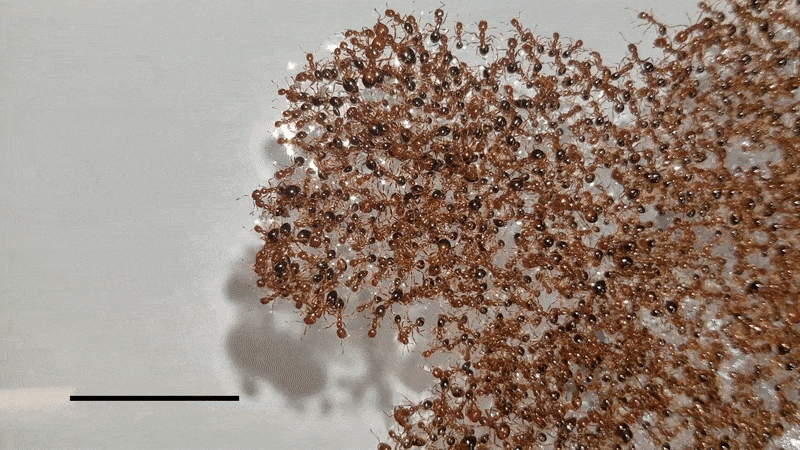Watch thousands of fire ants form living ‘conveyor belts’ to escape the floods (video)
[ad_1]
It takes a lot of teamwork to survive the floods, and the fire ants cooperate in the tens of thousands to build rafts of their bodies to float until the water calms down. Now a time lapse video shows how these nifty insects also create living conveyor belts on these rafts to help riders reach dry land.
The images revealed how the ant rafts changed shape, with thin extensions of ants growing from the main sections of the ant rafts like tentacles, in just a few hours. These bridges were born from the combined activity of two groups of ants: the so-called structural ants – insects that come together closely to keep the colony afloat – which circulated up the pile from the bottom, and the surface ants who walked freely on top. rafts, which then moved into supportive positions under their friends and relatives.
Related: Image gallery: Ants of the world
There are over 20 species of fire ants in the world, but one species in particular, the imported red fire ant (Solenopsis invicta), is known for its massive settlements of no less than 300,000 workers, according to North Carolina State University.
If their underground tunnels are flooded, the fire ants bond to create floating rafts that can hold together for weeks if necessary, carrying the colony until the waters recede. The exoskeleton of a fire ant naturally repels water and its rough texture traps air bubbles. Tightly knitted ant bodies can therefore create a floating and water resistant base for a floating raft, Live Science Previously reported.
Vast rafts of fire ants were plentiful in South Texas following 2017 record breaking Hurricane Harvey. People who were also fleeing the storm flood waters were urged to avoid the rafts, as the poisonous stings of the fire ants are extremely painful, Live Science reported that year.
Previous research has found that even after the structure of an ant raft stabilized, its shape continued to change, with quest tentacles extending in multiple directions – but scientists weren’t sure exactly how this happened.
“These protrusions have not, to our knowledge, been documented or explained in the existing literature,” researchers wrote in a new study, published June 30 in the Journal of the Royal Society Interface.

They collected around 3,000-10,000 fire ants at a time and deposited the insects in water containers with a rod in the center, around which the ants gathered and formed rafts. Scientists then filmed the ant rafts, capturing time-lapse and real-time images of the formation and shape change of the rafts. Image tracking data and computer modeling revealed which parts of the ant raft were static and which parts were in motion – and where all the ants went in different layers of the raft.
The study authors found that the raft’s exploratory tentacles were shaped by the movement of ants that the study authors called a “conveyor belt.” As the structural ants squirmed on the surface of the raft, the free ants burrowed into the lower structural levels. Together, this cycle contracted and enlarged the raft, creating narrow ant bridges extending outward to seek out nearby land where the colony could safely disperse.
Other factors, such as season, time of day, and colony habitat, can influence ant behavior and could also play a role in the dynamics that shape fire ant rafts. These variables were not explored in the experiments, but they could be investigated in future studies, the scientists concluded.
Originally posted on Live Science.
[ad_2]

